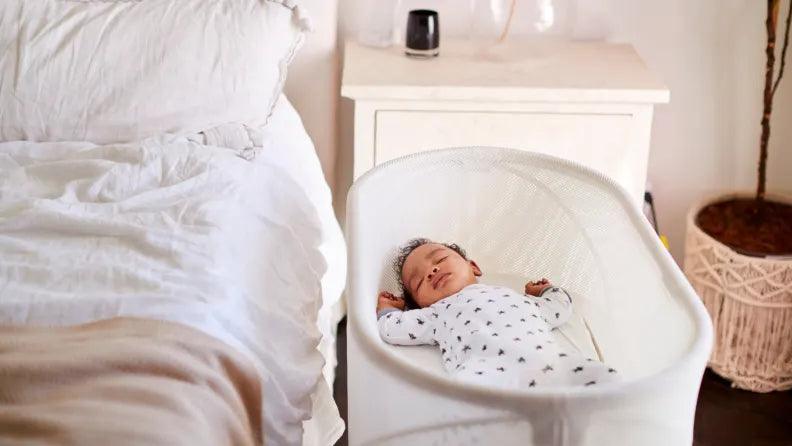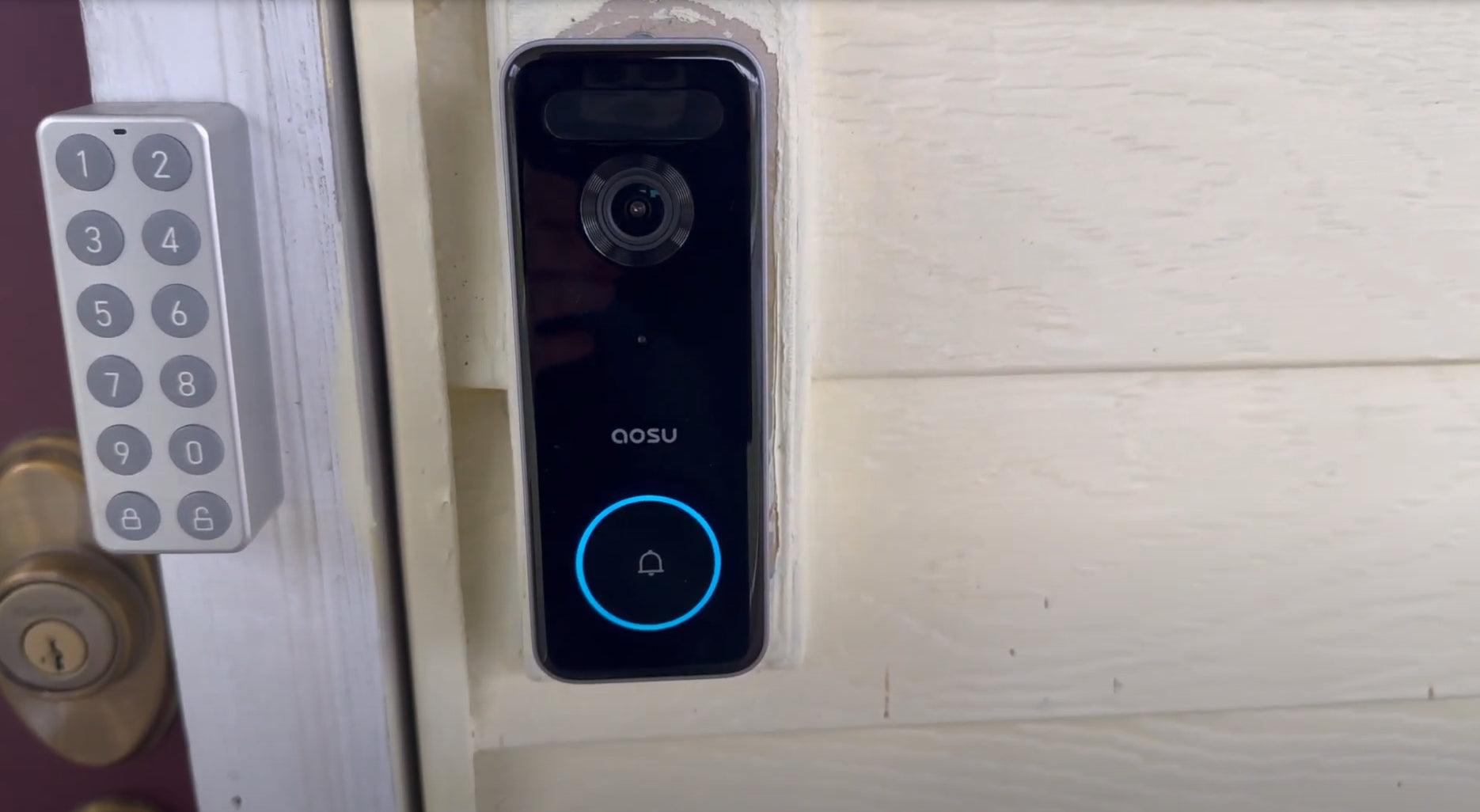As a parent, ensuring the safety and well-being of your child is paramount. Baby monitors stand out as an invaluable tool, allowing you to keep an ear and an eye on your little one while they sleep or play in another room. However, there comes a time when parents need to consider when to stop using a baby monitor. This decision can be challenging, as it involves balancing your child’s growing independence with their safety needs. In this guide, we'll explore the factors that influence this decision and provide practical advice for making the transition smoothly.
When to Stop Using a Baby Monitor
Determining the right age to stop using a baby monitor depends on your child's development and individual needs. Most experts suggest ceasing monitor use between ages 2 and 4. At this stage, children typically have established regular sleep patterns and can get in and out of bed independently, reducing the need for constant overnight supervision.
Key Indicators Your Child May No Longer Need a Baby Monitor
Understanding when your child is ready to stop using a baby monitor can be guided by several key indicators. These signs suggest that your child has reached a level of development and independence that reduces the need for constant monitoring.

1. Regular Sleep Patterns
One of the most significant indicators that your child may no longer need a baby monitor is the establishment of regular sleep patterns. By ages 2 to 4, many children sleep through the night without frequent wakings. Consistent sleep patterns indicate that your child can settle down and stay asleep without needing immediate intervention from you.
-
Sleeping Through the Night: If your child consistently sleeps through the night, waking up only occasionally, it’s a strong sign they are developing healthy sleep habits.
-
Predictable Sleep Cycles: Children with predictable sleep cycles, who wake up and go to bed around the same times each day, show that they have adapted to a stable routine.
2. Independent Mobility
As children grow, their physical abilities improve significantly. This increased mobility is a key factor in determining whether they still need a baby monitor.
-
Getting In and Out of Bed: If your child can safely get in and out of bed without assistance, it shows that they can navigate their environment independently. This reduces the need for constant monitoring since they can come to you if they need something.
-
Navigating Their Room: Children who can move around their room safely and find their way to your room if necessary demonstrate the independence required to sleep without a monitor.
3. Effective Communication
Effective communication is another crucial indicator. As children develop their language and communication skills, they become better at expressing their needs.
-
Verbal Communication: If your child can clearly communicate when they need help or if something is wrong, this reduces the need for a monitor. They can call out to you if they need assistance.
-
Non-Verbal Cues: Even non-verbal cues, such as pointing or using simple gestures, can indicate that your child can communicate their needs effectively during the night.
4. Reduction in Night Wakings
Another indicator is a decrease in the number of times your child wakes up during the night.
-
Self-Soothing: If your child has learned to self-soothe and can fall back asleep on their own after waking up briefly, this suggests they are becoming more independent in managing their sleep.
-
Less Frequent Night Wakings: Fewer night wakings mean there is less need for you to intervene, and thus, less need for a monitor to alert you.
5. Increased Confidence and Security
Finally, observe your child's overall confidence and sense of security at night.
-
Less Anxiety: If your child shows less anxiety about sleeping alone and seems more confident in their ability to sleep through the night, this indicates they are ready to do so without a monitor.
-
Positive Sleep Associations: Positive associations with their bed and bedtime can help children feel more comfortable sleeping independently.
Why You shouldn’t Use a Baby Monitor Too Long
While using baby monitors can enhance safety for infants, using them for an extended period can have drawbacks. Understanding these risks can help you make an informed decision about when to stop using the monitor.

Overdependence on Technology
Using a baby monitor for too long can lead to an overdependence on technology. Parents may come to rely excessively on the monitor to observe their child's every move and sound, which can prevent them from developing a natural understanding of their child's needs. This reliance can undermine their confidence in managing nighttime care without technological aid, creating a barrier to fostering a more intuitive caregiving approach.
Heightened Parental Anxiety
Prolonged use of baby monitors can contribute to heightened parental anxiety. Constantly monitoring a child's activities and noises can lead parents to worry excessively about minor, non-threatening issues. This perpetual vigilance can disrupt parents' sleep and well-being, making it harder to maintain a balanced approach to parenting as they interpret every sound as a potential problem.
Delayed Development of Independence and Self-Soothing Skills
Extended use of baby monitors can delay a child's development of independence and self-soothing skills. Constant parental intervention at the slightest sound can prevent children from learning to calm themselves and go back to sleep independently. This immediate response discourages self-soothing and problem-solving, delaying their development of autonomy.
How to Transition Away from Baby Monitors
Transitioning away from baby monitors can be a smooth process with the right approach. Here are some steps to help both you and your child adjust to this change.
Gradual Phase-Out
Instead of stopping the use of the monitor abruptly, consider a gradual phase-out. Start by turning off the monitor during naps to get used to the change. Gradually increase the time the monitor is off at night, such as turning it off for the first few hours or the last few hours of sleep. This gradual reduction helps both parents and children adjust to the absence of constant monitoring without feeling anxious.
Establish a Strong Bedtime Routine
A consistent and comforting bedtime routine can help your child feel secure about sleeping without a monitor. Activities like reading a bedtime story, taking a bath, or having quiet cuddle time can create a predictable and calming environment. This routine reassures your child and signals that it's time to wind down and sleep, reducing their reliance on the monitor.
Introduce Comfort Items
Comfort items can play a significant role in helping your child feel secure at night. Allow your child to have a favorite blanket, stuffed animal, or night light. These items provide reassurance and a sense of security, making it easier for your child to sleep without the need for constant monitoring.
Communicate and Reassure
Talk to your child about the changes and reassure them that you are nearby if they need you. Explain that they can call out to you or come to your room if they wake up and need comfort. This communication can reduce any anxiety your child might feel about not having the monitor and helps them understand that they are still safe.
Monitor Your Own Comfort
Ensure you also feel comfortable with the transition. If you find yourself anxious, remind yourself of the developmental milestones your child has achieved and the safety measures you've put in place. Building your confidence will help you stay consistent with the transition and avoid reverting to old habits.
Introducing aosu Indoor Cameras for Baby Monitoring
As you transition away from traditional baby monitors, aosu Indoor Cameras offer an excellent alternative that provides advanced features for monitoring your child's safety and well-being. With the features listed below, the indoor cameras of aosu can bridge the gap between constant monitoring and fostering independence in your child.

One Touch Call
The aosu Indoor Camera comes equipped with a one-touch call feature, allowing your child to communicate with you easily. This feature provides reassurance that they can reach you quickly if they need anything during the night.
2K QHD Quality Video with Clear Night Vision
Enjoy crystal-clear video quality with 2K QHD resolution, ensuring you can see every detail. The camera also offers clear night vision, so you can monitor your child effectively even in low-light conditions, providing peace of mind throughout the night.
Smart Motion Tracking and Alert
The smart motion tracking feature allows the camera to follow any movement within its range automatically. This ensures you are alerted to any significant activity in your child's room, helping you respond promptly if needed.
360° Round-Look
With a 360° round-look capability, the aosu Indoor Camera can cover every corner of the room. This comprehensive view eliminates blind spots, giving you complete visibility of your child's environment.
Conclusion
Deciding when to stop using a baby monitor is essential for fostering your child's independence. Transitioning away from baby monitors can be smooth with the tips we discussed above. You can also consider using aosu indoor cameras as an alternative during the transition, which can provide you with peace of mind while encouraging your child's growing independence.
More Readings:
How to Burglar-Proof My Home and Protect Families
How Different Types of Security Cameras Ensure Home Safety










Zostaw komentarz
Ta strona jest chroniona przez hCaptcha i obowiązują na niej Polityka prywatności i Warunki korzystania z usługi serwisu hCaptcha.